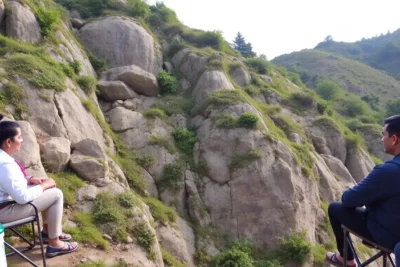
- What Makes the Sagrada Familia a Unique Architectural Marvel?
- The Historical Significance of the Sagrada Familia in Barcelona
- Exploring the Design and Symbolism of the Sagrada Familia
- A Detailed Look at Gaudí's Vision for the Sagrada Familia
- Visiting the Sagrada Familia: Tips and Insights for Tourists
- The Ongoing Construction of the Sagrada Familia: A Testament to Innovation
The Sagrada Familia, an iconic basilica located in the heart of Barcelona, is a stunning example of architectural genius. Designed by the renowned architect Antoni Gaudí, this extraordinary structure combines Gothic and Art Nouveau styles, captivating visitors from around the world with its intricate details and towering spires.
As you explore its mesmerizing facades and awe-inspiring interiors, you may find yourself pondering What is the Sagrada Familia in Barcelona: A Masterpiece of Architecture. This UNESCO World Heritage Site not only represents Gaudí's vision but also embodies the rich cultural and historical tapestry of Catalonia.
What Makes the Sagrada Familia a Unique Architectural Marvel?
The Sagrada Familia stands out as a unique architectural marvel due to its innovative design and construction techniques. Gaudí employed natural forms and organic shapes that harmoniously blend with the surrounding environment. This approach not only enhances the aesthetic appeal but also reflects Gaudí's deep respect for nature, making each element of the basilica a testament to the organic architecture movement.
One of the most remarkable features of the Sagrada Familia is its symbolic representation of Christian beliefs. Each facade tells a different story, dedicated to significant events from the life of Jesus Christ. The Nativity Facade symbolizes the birth of Christ, while the Passion Facade reflects his suffering and crucifixion. This intricate narrative structure invites visitors to engage with the spiritual significance behind the architecture.
Additionally, the basilica's towering spires reach heights of up to 170 meters, making it one of the tallest churches in the world. These spires are designed to represent the twelve apostles, the Virgin Mary, and Jesus Christ, showcasing a profound connection between the architecture and its religious purpose. The use of light and color within the interiors, particularly through stained glass windows, creates a breathtaking atmosphere that changes throughout the day, further enhancing the visitor experience.
- Architectural Styles: A fusion of Gothic and Art Nouveau
- Construction Techniques: Use of hyperboloid structures and catenary arches
- Symbolism: Each facade narrates different biblical stories
- Height: The tallest spire reaches 170 meters
The Historical Significance of the Sagrada Familia in Barcelona
The Sagrada Familia holds profound historical significance as a symbol of Barcelona's cultural identity. Initiated in 1882, this basilica has been under continuous construction for over a century, reflecting the enduring dedication of both its architects and the city itself. This ongoing project not only highlights the evolution of architectural techniques but also represents the collective ambition of Catalonia to showcase its unique artistic heritage.
As a UNESCO World Heritage Site, the Sagrada Familia serves as a cultural landmark that attracts millions of visitors each year. Its construction reflects the socio-political changes in Catalonia, particularly during the late 19th and early 20th centuries. The basilica became a canvas for expressing local identity and artistic innovation, linking the art scene of the time with a broader European context.
Furthermore, the Sagrada Familia is a testament to the spiritual and religious journey of a community. Each stone laid represents the faith and aspirations of countless individuals who have contributed to its construction. The ongoing work symbolizes a vision that transcends time, uniting generations in a shared purpose. This connection is deepened by the basilica's unique architectural features, which embody spiritual narratives central to the Christian faith.
- Historical Timeline: Construction began in 1882 and continues today.
- Architectural Evolution: Showcases advancements in building techniques.
- Cultural Impact: Enhances Barcelona's identity as an artistic hub.
- Community Engagement: Reflects the collective faith and aspirations of the local population.
Exploring the Design and Symbolism of the Sagrada Familia
The design of the Sagrada Familia is a tapestry of intricate details and profound symbolism, reflecting Gaudí's unique vision. His integration of natural forms allows the structure to resonate with elements found in nature, such as trees and mountains. This organic approach not only enhances its beauty but also serves to connect the spiritual with the earthly, inviting visitors to experience a sense of harmony and peace.
Each facade of the Sagrada Familia is rich in symbolism, conveying essential narratives from the Christian faith. For instance, the Passion Facade is designed to evoke emotions of sorrow and reflection, while the Nativity Facade celebrates joy and birth. These contrasting themes are further explored through:
- Natural Symbolism: Elements like flowers and fruits represent the creation.
- Architectural Elements: Columns resembling trees support the roofs, merging structure with nature.
- Light Play: The strategic use of stained glass enhances spiritual themes through color.
Gaudí's innovative use of geometry is evident in the Sagrada Familia's design, where he employed hyperboloid structures and catenary arches to achieve both aesthetic and structural integrity. This mathematical precision not only ensures stability but also creates a dynamic interplay of light and shadow throughout the basilica, enhancing the spiritual ambiance.
In summary, the Sagrada Familia stands as a monumental testament to the fusion of architecture and spirituality. Its design and symbolism not only reflect Gaudí's artistic genius but also serve as a reminder of the deeper spiritual journey that each visitor undertakes. The basilica invites all to explore its profound narratives and appreciate the intricate connection between architecture and faith.
A Detailed Look at Gaudí's Vision for the Sagrada Familia
Antoni Gaudí's vision for the Sagrada Familia encapsulates his innovative approach to architecture, where he sought to create a spiritual experience through design. He believed that architecture should reflect God's glory, making the basilica a true expression of faith. Gaudí's use of natural forms was intentional, aiming to harmonize the structure with its surroundings and integrate it into the landscape of Barcelona.
The Sagrada Familia is a narrative in stone, with each element symbolizing a deeper spiritual meaning. Gaudí envisioned the basilica as a living organism, where the columns resemble trees, reaching upward towards the heavens. This naturalistic design emphasizes a connection between the divine and the earthly, inviting visitors to engage with the sacredness of the space. Key aspects of his vision include:
- Organic Shapes: Reflecting forms found in nature, promoting a sense of unity.
- Symbolic Facades: Each facade narrates significant biblical stories, enriching the visitor's experience.
- Light and Color: Strategically placed stained glass windows enhance the spiritual atmosphere.
Gaudí's meticulous attention to detail is evident in every aspect of the Sagrada Familia, from the grand scale of its spires to the minutiae of its decorative elements. He employed an innovative use of geometry to balance aesthetics with structural integrity, ensuring that the basilica could withstand the test of time. This blend of art and science not only elevates the building's beauty but also showcases Gaudí's genius as a visionary architect.
In essence, the Sagrada Familia is not just an architectural masterpiece but a manifestation of Gaudí's spiritual quest. His vision sought to engage the senses, creating an immersive environment where visitors can reflect on their own beliefs and experiences. Thus, the basilica stands as a profound testament to the power of architecture to inspire and uplift the human spirit.
Visiting the Sagrada Familia: Tips and Insights for Tourists
Visiting the Sagrada Familia is a profound experience, and planning ahead can enhance your visit. It's advisable to purchase tickets online in advance to avoid long queues, especially during peak tourist seasons. Consider the audio guide option for a more enriching understanding of the basilica’s intricate details and symbolism. Guided tours are also available and provide in-depth insights into Gaudí's creative process and architectural vision.
When exploring the Sagrada Familia, pay attention to the different facades as each one tells a distinct part of the story of Christ. The Nativity Facade, for example, is filled with joyous imagery, while the Passion Facade exhibits a stark, somber tone reflective of Christ's suffering. Allocate time to marvel at the stunning stained glass windows inside, where the interplay of light and color creates a spiritual atmosphere that evolves as the sun moves throughout the day.
For the best experience, consider timing your visit early in the morning or late in the afternoon. These times often see fewer crowds, allowing for a more serene exploration. Additionally, check the calendar for any special events or masses that may be taking place during your visit, as attending one can provide a unique cultural experience and insight into the basilica's role in the community.
Lastly, while the Sagrada Familia is the main attraction, take some time to explore the surrounding area. The nearby Paseo de Gracia features other architectural marvels that echo Gaudí's style, such as Casa Batlló and Casa Milà. By immersing yourself in the local culture, you'll gain a deeper appreciation for the architectural and historical significance of the Sagrada Familia and its influence on Barcelona.
The Ongoing Construction of the Sagrada Familia: A Testament to Innovation
The ongoing construction of the Sagrada Familia is a remarkable testament to innovation in architecture. Since its inception in 1882, the project has embraced modern technologies while remaining true to Gaudí's original vision. Current methods include the use of 3D printing and computer-aided design, which facilitate the creation of intricate details that are essential to Gaudí's style. This blend of tradition and technology ensures that the basilica remains relevant in today’s architectural landscape.
As construction progresses, the Sagrada Familia continues to attract attention for its ambitious goals. The completion of the basilica is projected for 2026, coinciding with the 100th anniversary of Gaudí's death. The use of innovative construction techniques allows for a more efficient workflow, including:
- Prefabrication: Elements are produced off-site and assembled on location.
- Drones: Employed for surveying and monitoring construction progress.
- Collaboration: Architects and engineers from around the world contribute their expertise.
Moreover, the ongoing work on the Sagrada Familia showcases how architectural projects can evolve over time. The integration of contemporary artistic expressions into the design contributes to its legacy as a living work of art. The use of sustainable materials also reflects a commitment to environmental responsibility, highlighting a forward-thinking approach to building practices.
Ultimately, the Sagrada Familia serves not only as a religious monument but also as a symbol of cultural resilience. It embodies the spirit of innovation, adapting to the challenges of modern construction while preserving the essence of Gaudí's vision. This ongoing journey of creation invites visitors to witness the transformation of an architectural dream into reality.
 Exploring Montserrat: Are There Snakes Lurking in the Mountains?
Exploring Montserrat: Are There Snakes Lurking in the Mountains? Experiencing Serenity: Can You Stay in the Abbey of Montserrat?
Experiencing Serenity: Can You Stay in the Abbey of Montserrat?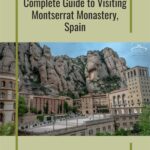 Do You Need a Reservation for Montserrat? A Guide for Visitors
Do You Need a Reservation for Montserrat? A Guide for VisitorsIf you want to know other articles similar to What is the Sagrada Familia in Barcelona: A Masterpiece of Architecture you can visit the category Blog.
Deja una respuesta

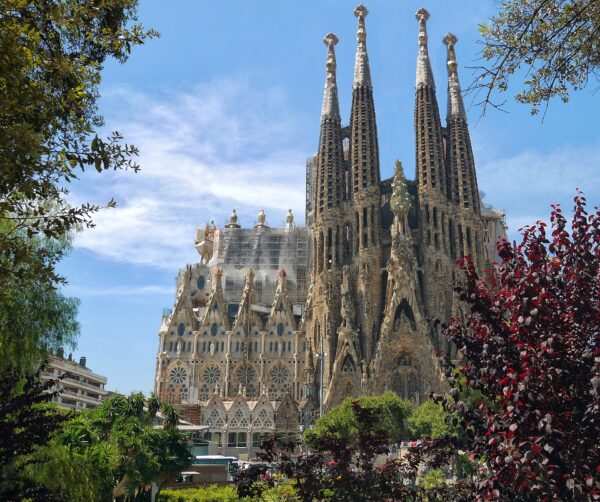
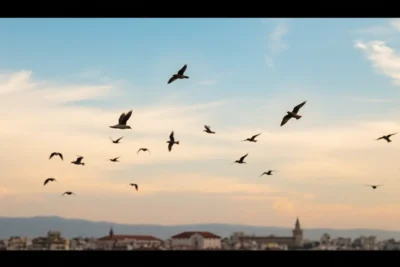



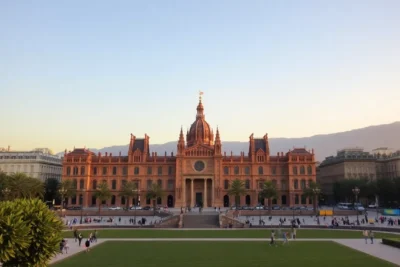

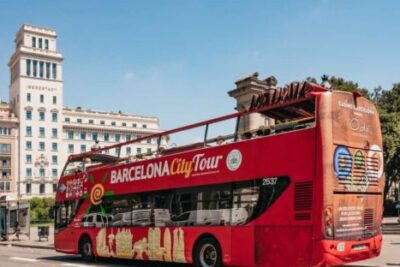
Read more!